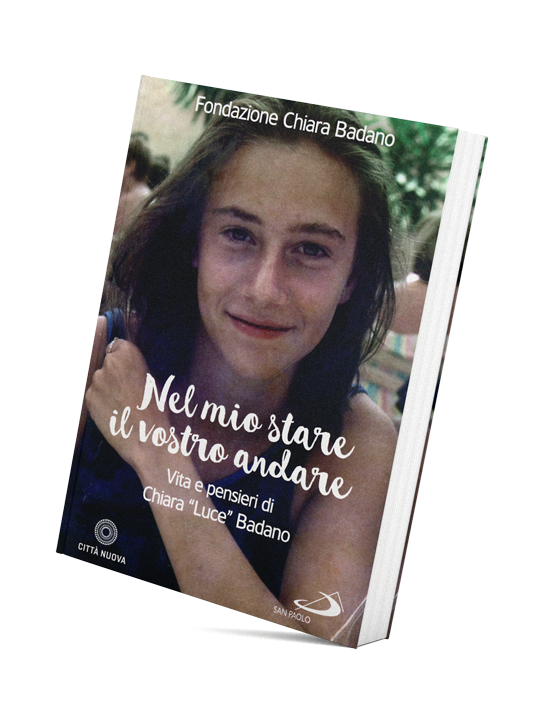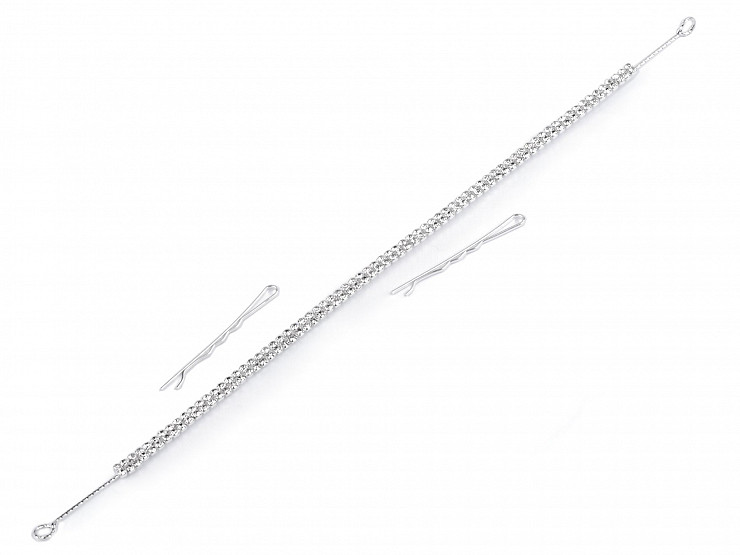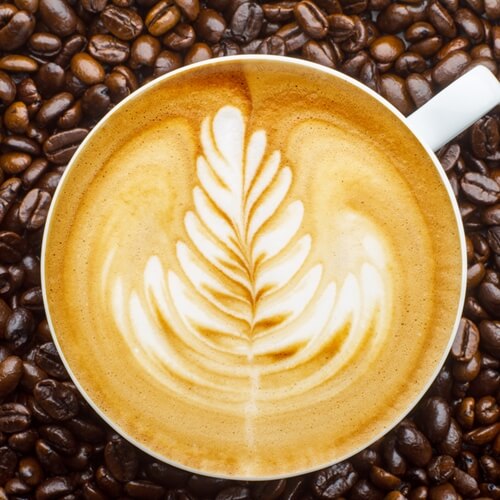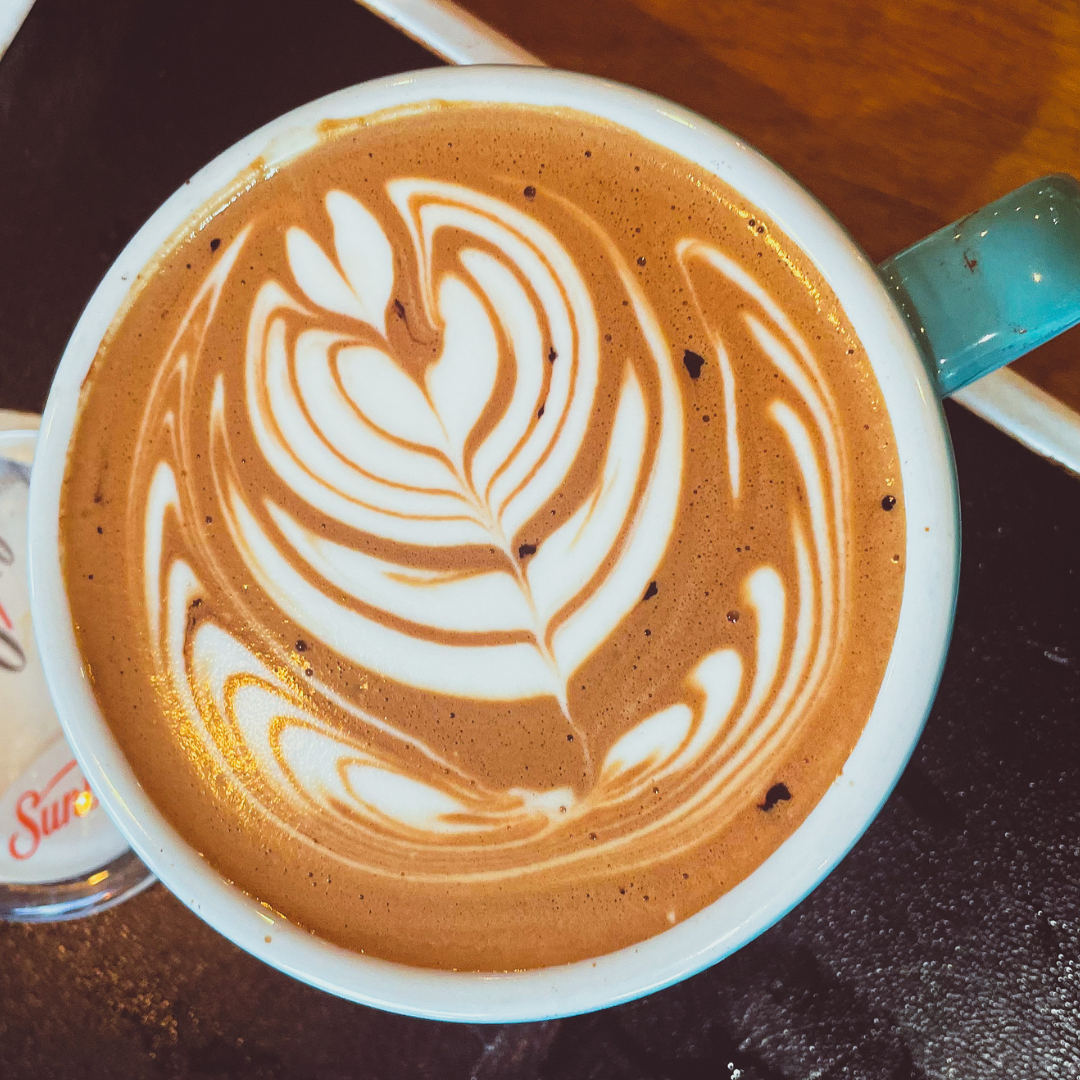Cappuccino Art vs Latte Art: A Detailed Insight
€ 35.00 · 4.7 (121) · In Magazzino
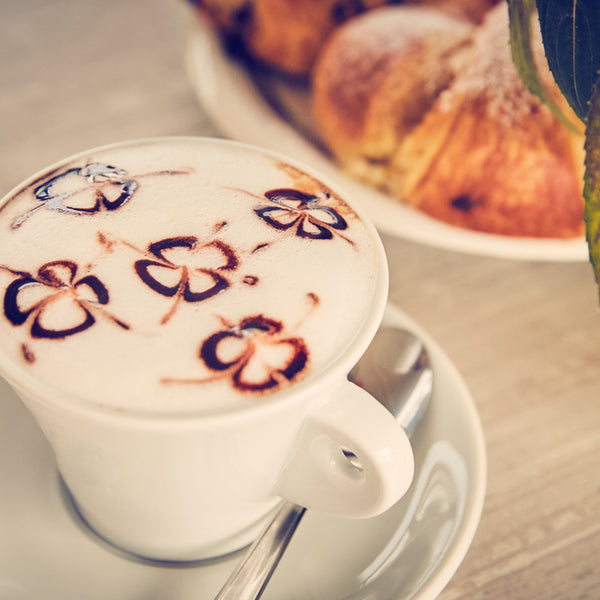
Are you a coffee lover who appreciates the beauty of latte and cappuccino art? In this post, we're providing a detailed insight into the art of these two classic coffee drinks. Get ready to learn about the techniques, tools, and creativity involved in creating stunning latte and cappuccino art. Let's dive in and discover the art behind your favorite coffee drinks! Cappuccino Art Vs Latte Art: An Overview Origins of Cappuccino and Latte Cappuccino and latte are both popular espresso-based beverages, which originated in Italy. The cappuccino is a coffee drink composed of equal parts espresso, steamed milk, and milk foam, providing a rich flavor and creamy texture. It is believed to have been inspired by the color of the robes worn by Capuchin monks, hence the name "cappuccino." On the other hand, the latte features a larger proportion of
Are you a coffee lover who appreciates the beauty of latte and cappuccino art? In this post, we're providing a detailed insight into the art
Are you a coffee lover who appreciates the beauty of latte and cappuccino art? In this post, we're providing a detailed insight into the art of these two classic coffee drinks. Get ready to learn about the techniques, tools, and creativity involved in creating stunning latte and cappuccino art. Let's dive in and discover the art behind your favorite coffee drinks!
Cappuccino Art Vs Latte Art: An Overview
Origins of Cappuccino and Latte
Cappuccino and latte are both popular espresso-based beverages, which originated in Italy. The cappuccino is a coffee drink composed of equal parts espresso, steamed milk, and milk foam, providing a rich flavor and creamy texture. It is believed to have been inspired by the color of the robes worn by Capuchin monks, hence the name cappuccino. On the other hand, the latte features a larger proportion of steamed milk, making it a smoother and creamier drink with a more subtle espresso taste.
Key Differences
The main distinction between cappuccino art and latte art lies in the techniques used and the visual appearance of the completed beverages. Cappuccino art primarily involves creating patterns in the milk foam on top of the cappuccino. In contrast, latte art refers to any design formed within the milk or foam of a latte. To create either type of art, baristas must have a steady hand and be well-practiced in their craft.
Cappuccino art involves a thicker foam layer that lends itself well to more raised and sculptural designs. Meanwhile, latte art includes designs such as hearts, rosettas, and swans, which are achieved by expertly pouring steamed milk into the espresso to create intricate patterns. The latte's larger volume of steamed milk allows for more intricate and detailed designs.
Why Art Matters
Coffee art not only adds a visually appealing element to espresso drinks but also showcases a barista's skill and attention to detail. The artistry involved in creating these designs adds an extra layer of enjoyment for coffee enthusiasts and provides a unique personal touch to each beverage. Furthermore, the presentation of beautiful latte and cappuccino art can elevate the overall customer experience, turning a simple coffee run into a memorable, sensory event.
To summarize, both cappuccino art and latte art are expressions of creativity and skill within the world of coffee. Though they differ in techniques and appearance, both forms of art add visual appeal and demonstrate the craftsmanship of talented baristas.
Ingredients and Proportions
Espresso
In both cappuccino and latte art, espresso serves as the foundation. It is made by forcing hot water through finely ground coffee at high pressure to create a concentrated, flavorful shot. Espresso is typically rich and bold, providing the strong coffee flavor that characterizes these popular beverages.
Milk and Foam
Steamed milk and foam are crucial elements in the making of both cappuccinos and lattes. The difference lies in the amount and texture of the milk used. Cappuccinos typically have a higher proportion of foam, resulting in a thicker, airier texture. On the other hand, lattes use more steamed milk, which creates a creamier, smoother consistency.
Ratio Differences
The primary distinction between cappuccinos and lattes lies in the ratio of their ingredients. A cappuccino generally has equal parts espresso, steamed milk, and foam (⅓ each), leading to a stronger espresso flavor. In contrast, a latte comprises of ⅓ espresso and ⅔ steamed milk, with a thin layer of foam on top. This higher milk proportion yields a milkier and richer taste.
Cappuccino ratio:
1 part espresso
1 part steamed milk
1 part foam
Latte ratio:
1 part espresso
2 parts steamed milk
Thin layer of foam
The type of milk used in both beverages can also vary, with some people opting for whole milk, while others prefer skim, almond, or soy. These choices can slightly affect the texture and flavor of the coffee, but the fundamental ratio differences between cappuccinos and lattes remain consistent.
Caffeine content is another aspect to consider when comparing these espresso-based drinks. Both cappuccinos and lattes have around 173 mg of caffeine per 16-ounce serving, so their caffeine levels are relatively similar. The choice of selecting one over the other then becomes a matter of personal taste, based on the desired balance of espresso and milk.
Taste and Texture
Flavor Profiles
Cappuccino art and latte art showcase the unique characteristics of these two popular coffee beverages. The primary difference between the two lies in their flavor profiles. Cappuccino art emphasizes the rich and velvety foam, allowing for intricate designs that highlight the coffee's layered complexity. The espresso flavor in a cappuccino shines through, while the foam adds a subtle sweetness. On the other hand, latte art focuses on the espresso and milk combination, resulting in a smoother, creamier taste. Lattes typically have a sweeter flavor due to the larger milk content, making them ideal for those with a preference for milder coffee drinks.
Mouthfeel
The mouthfeel of cappuccinos and lattes also differs significantly due to their unique compositions. A cappuccino features a thick layer of frothy foam that creates a rich, velvety texture on the palate. This foam is key to creating intricate cappuccino art designs. Lattes, in contrast, have a silkier texture, thanks to the higher milk content and minimal use of foam. The creaminess of a latte lends itself well to more fluid-like art forms.
Caffeine and Sugar Content
Drink
Caffeine Content (mg)
Sugar Content (g)
Cappuccino (16 oz)
173
Varies
Latte (16 oz)
173
Varies
Cappuccinos and lattes have comparable caffeine contents, with both containing approximately 173 mg per 16-ounce serving. However, the sugar content can vary significantly between the two, depending on factors such as milk type and added sweeteners. Cappuccinos typically have less sugar due to their smaller milk volume, while lattes can have a higher sugar content due to the greater milk quantity. Keep in mind that these sugar levels can be adjusted by selecting non-fat or alternative milk options, such as almond, coconut, or oat milk.
In understanding the nuances between cappuccino and latte art, one cannot overlook the pivotal role played by the machines creating these brews. The right equipment can bring out the best in both drinks. For those looking to recreate such impeccable taste and presentation in a more professional setting, considering a top-notch commercial espresso machine becomes vital. Whether you're hoping to buy commercial espresso machines or simply seeking an espresso machine for commercial purposes, Majesty Coffee offers a curated collection to cater to your needs. After all, mastering the art begins with having the right tools.
Design and Creativity
When it comes to coffee, design and creativity play a significant role in making the experience more enjoyable and appealing. Both cappuccino art and latte art feature various techniques, tools, and stencils that skilled baristas use to create visually impressive cups of coffee.
Latte Art Techniques
Latte art is the aesthetical combination of milk froth and espresso, which is created when steamed milk is poured into a cup containing espresso. There are two primary techniques for creating latte art: free pouring and etching.
Free Pouring: Free pouring involves blending the milk foam and the espresso directly while pouring the milk. This method results in more organic and flowing patterns, such as the famous rosetta, heart, and tulip designs.
Etching: Etching employs pointed tools to draw more intricate and detailed designs on the milk foam surface. Baristas can create a wide range of latte art designs with this technique, limited only by their creativity and steady hand.
Cappuccino Art Techniques
Cappuccino art is similar to latte art but focuses on crafting designs on the foam layer that sits on top of a cappuccino. The primary techniques for creating cappuccino art include dusting, layering, and sculpting.
Dusting: Dusting involves adding powder-like toppings, such as cinnamon or chocolate, to the surface of the milk foam. This technique often uses tools like stencils or shakers to create more complex designs and patterns.
Layering: Layering is a technique where baristas add layers of milk foam, whipped cream, or other toppings to create texturally varied designs.
Sculpting: Sculpting takes cappuccino art to the next level by molding and shaping the milk foam or whipped cream into three-dimensional sculptures, such as leaves or animals.
Tools and Stencils
To create beautiful latte and cappuccino art, baristas use a variety of specialized tools and stencils. Some of the most common tools for latte and cappuccino art include:
Steam pitchers: These are used for steaming and frothing milk to the ideal consistency required for the art.
Thermometers: Baristas use thermometers to make sure the milk is heated to the perfect temperature for frothing.
Pouring jugs: These specially designed jugs help baristas control the flow of milk to create precise latte art patterns.
Spatulas and knives: These are employed for sculpting milk froth or whipped cream into desired shapes.
Pointed tools (such as toothpicks or special etching needles): These are utilized for etching intricate designs on latte art.
Stencils and shakers: Baristas employ these to create patterns with dusting powders like cinnamon or chocolate.
By using these techniques, tools, and stencils, skilled baristas can create stunning works of cappuccino and latte art that not only delight their customers but also demonstrate their abilities in the art of coffee making.
Popular Variations
Macchiato
The macchiato, originating from Italy, is a popular variation of espresso drinks that involves adding a small amount of foamed milk to an espresso shot. The word macchiato means stained or spotted in Italian, referring to the appearance of the espresso after the milk has been added. Unlike cappuccino and latte art, the artistry in a macchiato comes from the contrast between the dark espresso and the light milk foam.
Macchiatos generally use a single shot of espresso and are known for their smooth texture and strong espresso flavor. Skilled baristas may sometimes create simple designs with the milk foam, though it is not as common as in cappuccinos or lattes.
Flat White
The flat white is an espresso-based drink that originated from Australia and New Zealand. It is known for having a smooth, velvety texture and a harmonious balance between milk and espresso. The flat white is made using a double espresso shot topped with microfoamed milk, which is steamed milk with a small amount of air incorporated, resulting in a creamy, silky texture.
While flat white designs are not as intricate or common as latte art, the microfoam can be used to create simple patterns that enhance the visual appeal of the beverage. The flat white's distinguishing characteristic comes from the smooth, even layer of milk foam.
Latte Macchiato
The latte macchiato, also of Italian origin, is a variation of espresso drinks with a focus on the visual presentation of the layers. Unlike a classic macchiato, which adds foamed milk to the espresso, a latte macchiato involves pouring espresso over steamed milk, resulting in a layered appearance with the espresso marking the milk.
Creating art within a latte macchiato involves the careful and precise pouring of the espresso, which can create interesting patterns and designs as it interacts with the milk. This variation is visually appealing due to the distinct layers, and the taste is milkier than that of a regular macchiato, making it a popular choice amongst espresso lovers.
In summary, each espresso-based variation stands out in terms of presentation and flavor profile. While cappuccino and latte art focus more on intricate designs, the macchiato, flat white, and latte macchiato offer unique visual elements that showcase the beauty of contrast and layering in coffee beverages.
Impact on Coffee Culture and Trends
Influence of Social Media
The advent of social media has played a significant role in popularizing cappuccino art and latte art, making it an essential aspect of modern coffee culture. Platforms such as Instagram, Facebook, and Pinterest have been showcasing these art forms worldwide, inspiring both baristas and coffee connoisseurs. Highly visual platforms have propelled the creation and sharing of these beautifully decorated beverages, which allow businesses like Starbucks to attract customers and drive demand for their products.
Rise in Demand for Specialty Drinks
Cappuccino art and latte art have evolved into an important part of the overall experience customers seek when ordering specialty coffee drinks. The rise in demand for these visually appealing creations has shifted the focus towards the artistry and skill involved in their production. Baristas are now not only expected to deliver a perfectly brewed coffee but also create stunning foam designs on the surface. The crema of an espresso, for instance, plays a vital role as it adds visual appeal and contributes to the flavor profile of these specialty drinks.
Expert Tips and Tricks
As the popularity of cappuccino and latte art grew, so did the need for expert guidance to perfect these techniques. Baristas and coffee aficionados alike continue to explore various tips and tricks to create intricate designs. Some key elements to consider include:
Using high-quality, fresh coffee beans to ensure a rich crema.
Ensuring the milk is steamed to a silky texture as it directly impacts the ability to create intricate designs.
Maintaining the right pour height and flow to control the placement of the foam on the coffee's surface.
In addition to these tips, participating in barista workshops, watching online tutorials, or learning from seasoned experts can enhance one's ability to create stunning cappuccino and latte art.
The growing influence of social media, rising demand for specialty drinks, and the availability of expert tips and tricks have significantly contributed to the prominence of cappuccino and latte art in contemporary coffee culture.
FAQ: Frequently Asked Questions
Calorie and Nutritional Information
When it comes to cappuccino art and latte art, the calorie and nutritional information of these beverages may be of interest to many readers. Both cappuccinos and lattes contain espresso, milk, and sometimes milk foam which contribute to their nutritional content. In general, a cappuccino may have more foam than a latte, resulting in a lighter, airier texture with fewer calories. However, the difference in calorie content between these two beverages is usually minimal. It's important to note that the type of milk used, as well as any additional sweeteners or flavorings, will also affect the calorie and nutritional content of these drinks.
Milk Choices and Preferences
An essential factor in creating beautiful cappuccino and latte art is the milk used. Different milk choices will result in varied textures and tastes, influencing the appearance and flavor of the final product. For instance, whole milk tends to create a creamier, richer flavor with a smoother texture, while skim or reduced-fat milk will produce a lighter, frothier outcome. Some coffee aficionados may also have preferences for alternative milk options like almond, soy, or oat milk, which can result in a different taste and mouthfeel compared to traditional cow's milk. The choice of milk will ultimately depend on individual preferences and nutritional considerations.
Espresso Shots and Crema
The espresso shot plays a significant role in both cappuccino and latte art. A well-pulled espresso shot should display a layer of crema, the golden-brown froth that forms on the surface of the liquid espresso. This creamy foam is the result of oils and sugars from the coffee beans blending together under pressure. The crema not only adds a mild sweetness to the espresso but also contributes to the overall visual appeal of cappuccino and latte art. Since the taste and appearance of the crema can vary depending on the type of coffee beans and the espresso machine's quality, it is essential to use high-quality equipment and coffee beans to achieve an optimal crema for beautiful and flavorful cappuccino or latte art.
To create cappuccino and latte art, the barista must pour steamed milk into the espresso shot carefully. In cappuccinos, there should ideally be an equal ratio of espresso, steamed milk, and milk foam. Lattes, on the other hand, have a higher amount of steamed milk and a thinner layer of milk foam, resulting in a milder, smoother taste compared to a cappuccino. By controlling the pour and the milk's frothiness, the barista can create intricate designs and patterns in the foam of both cappuccino and latte art. With practice and a steady hand, anyone can learn to create this visually appealing and delicious form of coffee artistry.

Latte Art Swans - How to Pour the Best Latte Art?
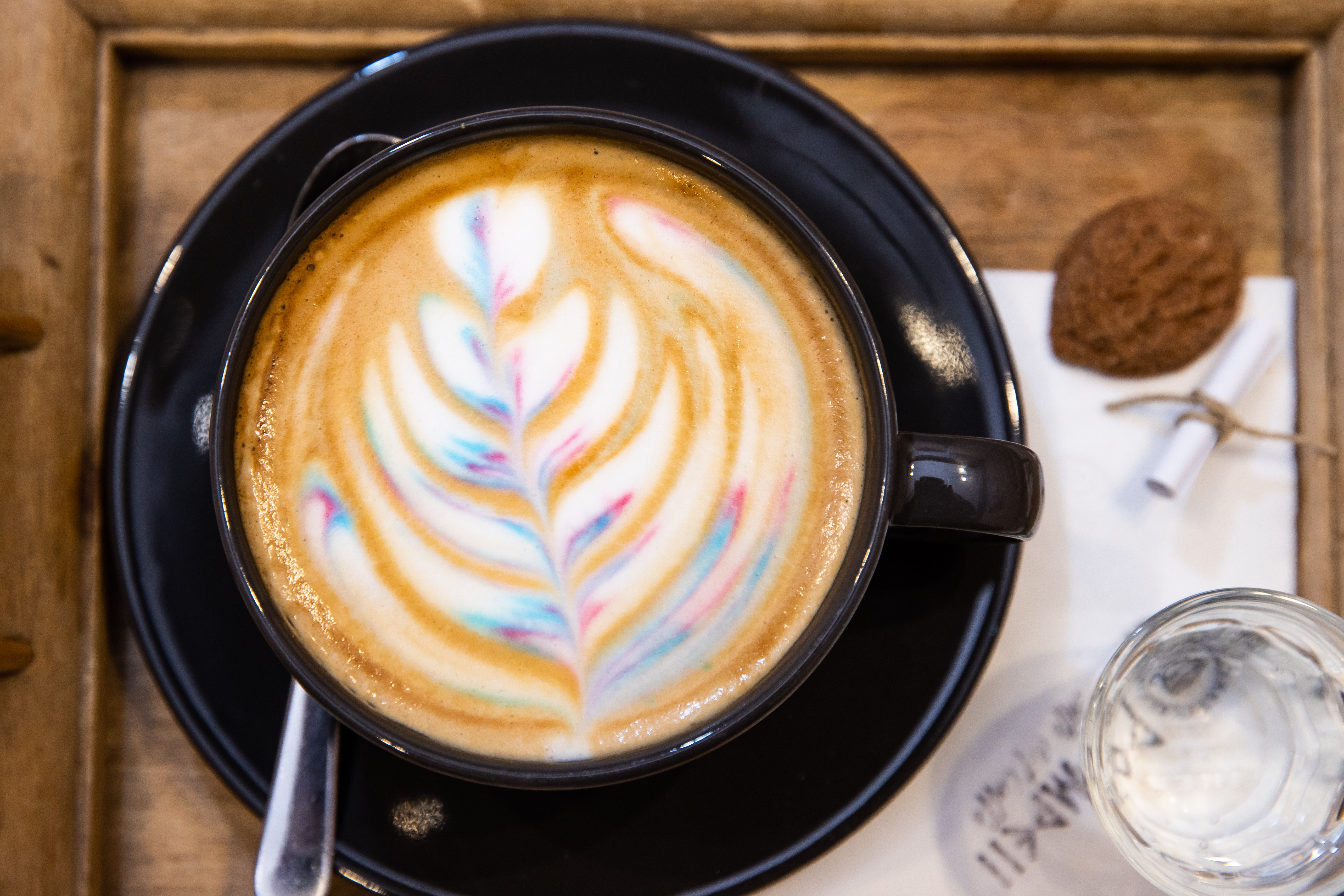
What have the Romans ever done for us? Put swans on our coffee! Pompeii Latte Art Caffe exalts Italy - English - WeloveBudapest
Does coffee taste better with latte art? A neuroscientific perspective

Cappuccino and latte art - Tips and Techniques
Do the Type of Milk Used Vary According to the Coffee Types? – An insight into the
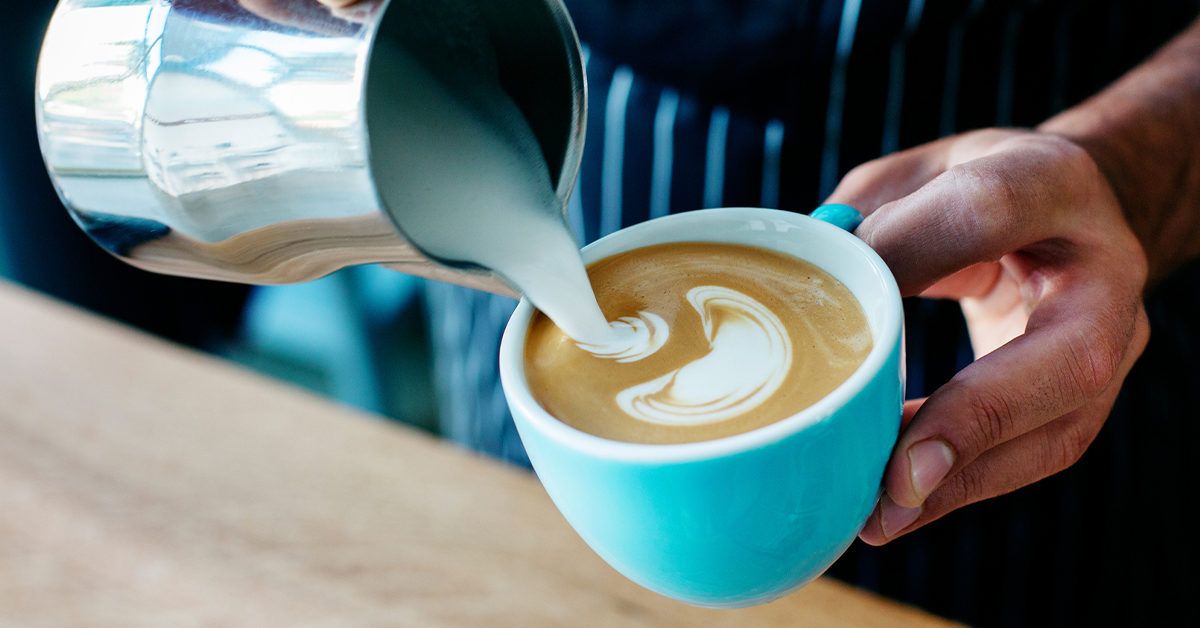
Cappuccino vs. Latte vs. Macchiato — What's the Difference?
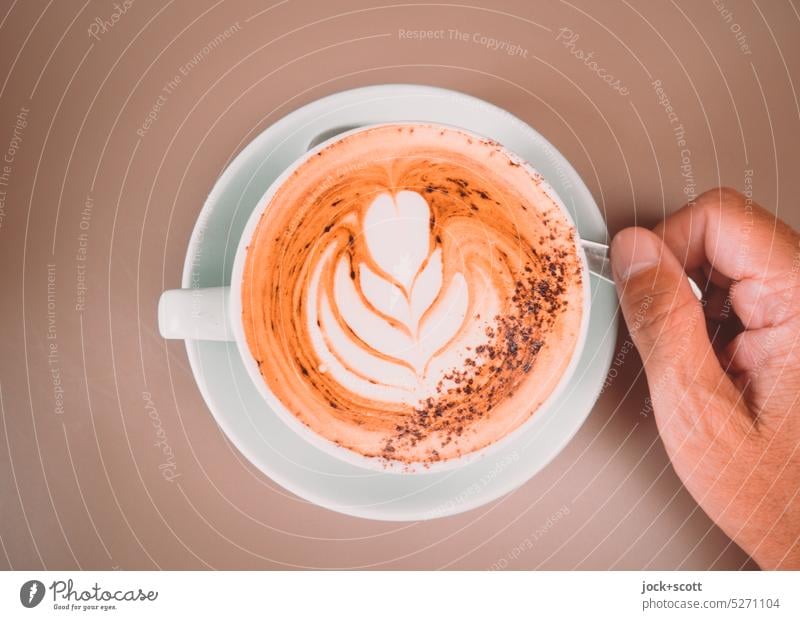
Latte art an art to drink - a Royalty Free Stock Photo from Photocase

Your Essential Guide to Making Latte Art
Foaming Coffee Creamer market size will grow at a CAGR of 4.2% from 2023-2030: Cognitive Market Research
Why Isn't There Latte Art On My Cappuccino? – Yellow Brick Coffee

Your Essential Guide to Making Latte Art



